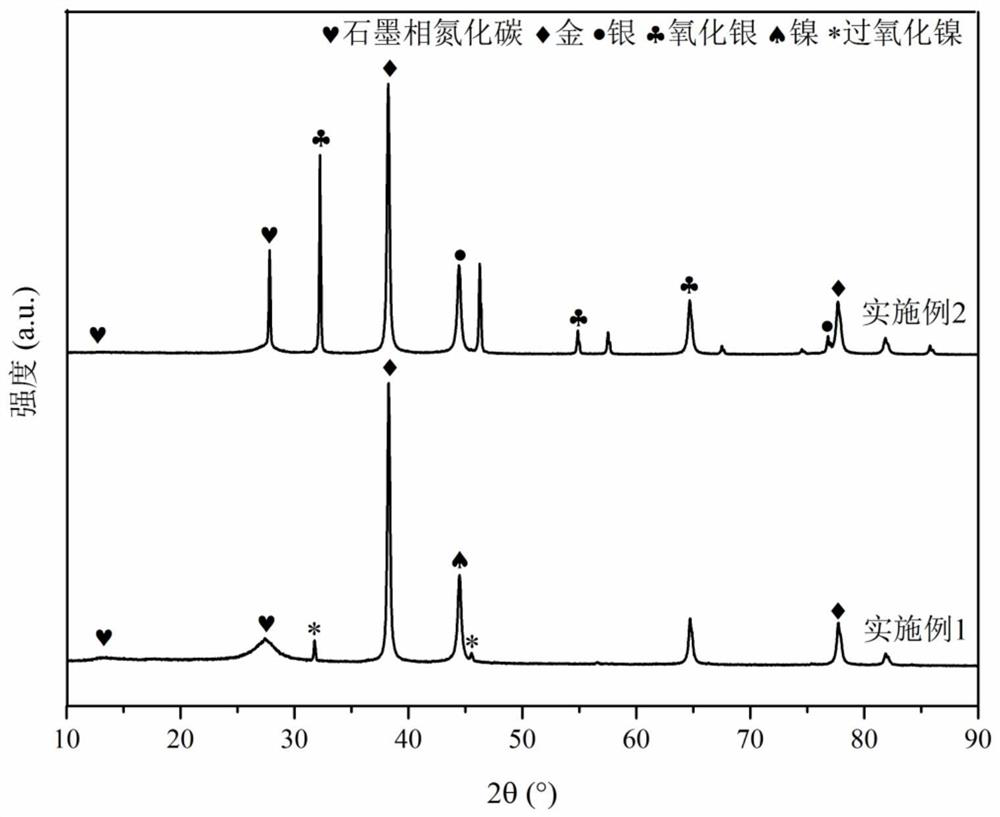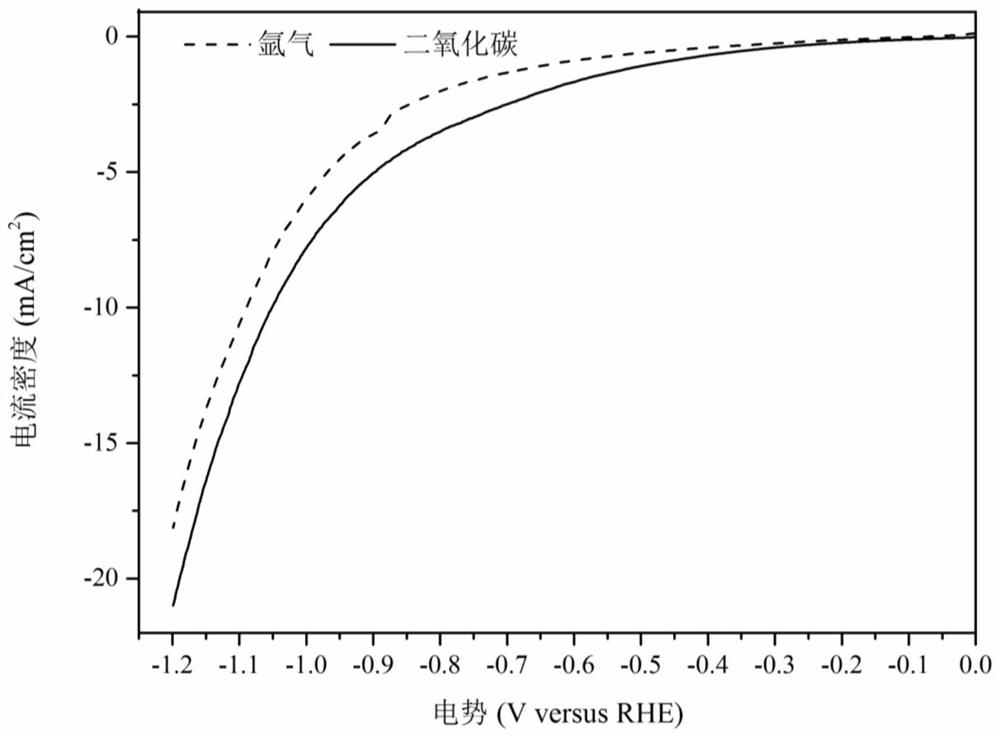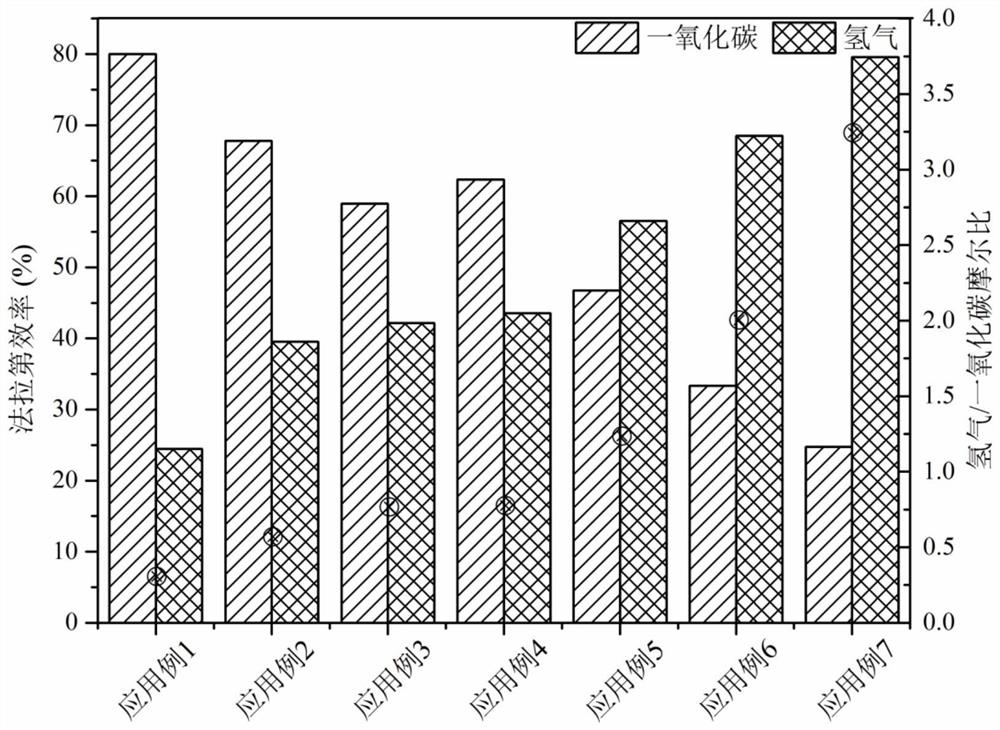Gas diffusion electrode, preparation method and application thereof
A gas diffusion electrode and body technology, applied in the field of electrochemical catalysis, can solve the problems of low energy utilization rate of electrochemical reduction of carbon dioxide, poor product selectivity, easy deactivation of catalysts, etc., to increase the catalytic activity of electrochemical reduction, increase Effect of contact area and improvement of Faraday efficiency
- Summary
- Abstract
- Description
- Claims
- Application Information
AI Technical Summary
Problems solved by technology
Method used
Image
Examples
Embodiment 1
[0045] Embodiment 1: catalyst preparation
[0046] Preparation concentration is that the sodium borohydride solution of 0.075%, the trisodium citrate solution that concentration is 1%, the chloroauric acid solution that concentration is 10% and the nickel chloride solution that concentration is 10%, place 100mg multi-walled carbon nanotube Put in a beaker containing 50mL deionized water and ultrasonically disperse for 30min, measure 150mL deionized water into a 500mL round bottom flask, add 1mL chloroauric acid solution and 1mL nickel chloride solution, add 2mL trisodium citrate solution drop by drop and 2mL of sodium borohydride solution, and finally add the graphite phase carbon nitride after pickling and ultrasonic stripping, and stir evenly in an ice-water bath for 2h at a stirring rate of 500rpm. After centrifugation, washing, and vacuum drying, graphite phase carbon nitride is obtained. The supported gold-nickel bimetallic catalyst, which is the electrochemical reduction...
Embodiment 2
[0047] Embodiment 2: catalyst preparation
[0048] The specific preparation process is as shown in Example 1. Only changing the type of the precursor solution of the second metal and adding 1 mL of silver nitrate solution with a concentration of 10% can obtain a gold-silver bimetallic catalyst supported by carbon nitride in the graphite phase, which is called AuAg / C 3 N 4 catalyst. For AuAg / C in embodiment 2 3 N 4 Catalysts were characterized by X-ray diffraction, such as figure 1 As shown, it can be seen that the catalyst includes multi-walled carbon nanotubes and two metal elements of gold and silver.
Embodiment 3
[0049] Embodiment 3: catalyst preparation
[0050] The specific preparation process is as shown in Example 1. Only changing the type of the precursor solution of the second metal, adding 1 mL of ferrous acetate solution with a concentration of 10%, can obtain the gold-iron bimetallic catalyst supported by carbon nitride in the graphite phase, called for AuFe / C 3 N 4 catalyst. For AuFe / C in embodiment 3 3 N 4 Catalysts were characterized by X-ray diffraction, such as figure 1 As shown, it can be seen that the catalyst includes multi-walled carbon nanotubes and two metal elements of gold and iron.
PUM
 Login to View More
Login to View More Abstract
Description
Claims
Application Information
 Login to View More
Login to View More - Generate Ideas
- Intellectual Property
- Life Sciences
- Materials
- Tech Scout
- Unparalleled Data Quality
- Higher Quality Content
- 60% Fewer Hallucinations
Browse by: Latest US Patents, China's latest patents, Technical Efficacy Thesaurus, Application Domain, Technology Topic, Popular Technical Reports.
© 2025 PatSnap. All rights reserved.Legal|Privacy policy|Modern Slavery Act Transparency Statement|Sitemap|About US| Contact US: help@patsnap.com



